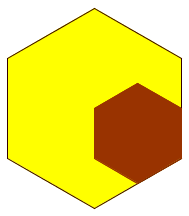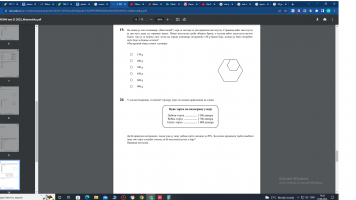Two regular hexagons. The side of a larger hexagon
is twice as long as the smaller page. The smaller hexagon should be painted brown, and the rest of the larger hexagon yellow
color. If 150 g of brown paint was used to paint this logo on the company's building, as much as was needed
yellow to dye the rest?Can anyone help me ans show me step by step how to slove this problem.Thanks
is twice as long as the smaller page. The smaller hexagon should be painted brown, and the rest of the larger hexagon yellow
color. If 150 g of brown paint was used to paint this logo on the company's building, as much as was needed
yellow to dye the rest?Can anyone help me ans show me step by step how to slove this problem.Thanks


